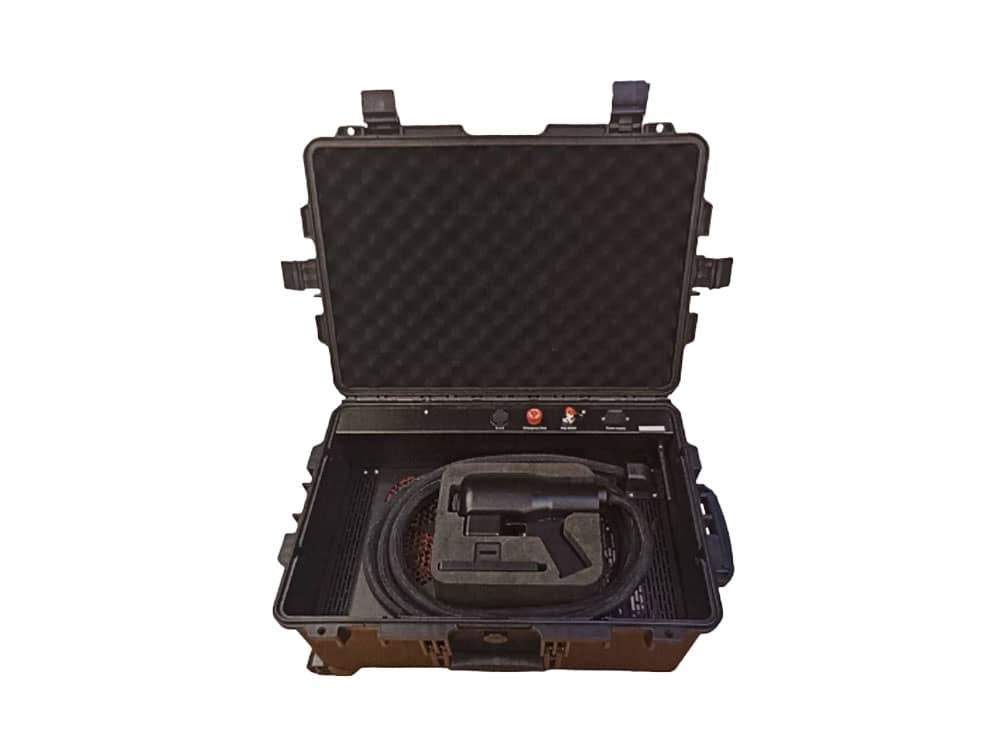Introducing the New Suitcase Laser Cleaning System from Restorative Techniques

Restorative Techniques are pleased to announce the launch of our Laser Cleaning Machine, purpose-designed for the careful removal of surface contaminants and markings that are not suited to conventional methods of cleaning.
Stonework, from historic monuments to modern architectural facades, is often subjected to a range of contaminants-pollution, biological growth, graffiti, and centuries-old accumulations of grime. Traditional cleaning methods, such as chemical washes, abrasive blasting, and manual scrubbing, can be effective but often come with drawbacks, including potential damage to the substrate and environmental concerns. In recent decades, laser cleaning technology has emerged as a sophisticated and precise alternative, revolutionising the conservation and restoration of stone surfaces.
Whether the stains are on historic buildings, landmarks or sculptures, our Laser Cleaning Machine is designed for the targeted removal of stubborn deposits from even the most delicate of substrates. Its precision-cleaning capabilities can deliver an unrivalled finish.
Developed in-house by our experienced team of designers and engineers, our Laser Cleaning Machine is available in two models, distinguished by their power output. 200W and 300W models are available to meet the requirements of different tasks.
Advantages of Laser Cleaning for Stonework
- Precision and Selectivity: Laser cleaning allows for micrometre-level control, making it ideal for intricate carvings, inscriptions, and uneven surfaces.
- Non-Contact Process: As there is no physical contact, the risk of abrasion, scratching, or mechanical damage is drastically reduced.
- No Chemical Use: The method avoids the introduction of potentially harmful chemicals, making it environmentally friendly and suitable for sensitive sites.
- Reduced Residue: Properly controlled laser cleaning minimises the risk of secondary residues or wash-off, which can be a problem with wet cleaning methods.
- Controlled Depth: Lasers can be calibrated to remove specific layers, allowing conservators to leave desirable patinas or surface features untouched.
What Lasers Are Good at Cleaning on Stonework
Lasers are most effective when the surface contaminant is darker than the underlying material, making them especially suitable for removing carbon sulphation and carbon from materials like limestone, concrete, terracotta, and sandstone.
Carbon Sulphation and Atmospheric Pollution
One of the most common forms of soiling on historic limestones is the accumulation of "black crusts," which are composed primarily of gypsum, carbon particulates, and other airborne pollutants. Lasers excel at cleaning these deposits because the energy is absorbed by the crust, causing it to fragment and lift away, while the less-absorptive stone beneath remains largely unaffected.
Soot and Smoky Deposits
Buildings exposed to smoke-whether from urban pollution, industrial sources, or historic fires-often develop persistent soot deposits. These carbon-rich layers are problematic for restoration, as their removal can sometimes lead to the loss of stone detail. Laser technology, by selectively targeting dark soot particles, enables conservators to clean delicate carvings and details without blurring or flattening them, preserving the stone's original craftsmanship.
If you wish to hire out or purchase one of our laser cleaning machines, full operator training is required to meet applicable regulations and ensure safe and effective use. We are happy to provide this training, and that is included in the machine purchase or rental price (for training held at our Bristol headquarters). Alternatively, you can hire the services of one of our certified, trained operators to carry out the work for you.
Each model of the machine has a user-friendly interface allowing for the control of six separate parameters and eight different patterns, which can be set at differing levels suited to the cleaning of the specific substrate and substance that are being targeted. Our laser cleaning machine has already been used in the successful cleaning of The Natural History Museum to remove years of pollution from its exterior and sculptures, Canterbury Cathedral has used it to successfully clean and remove carbon sulphation from the historic Christchurch gate, Lincoln Cathedral has been using our laser to clean decorative sculptures and quatrefoils on the east elevation and the Sun Dials project to remove carbon and iron staining from a historic 17th century sandstone sundial as published in the British Sundial Society Bulletin vol 36.
If you would like further information on our laser cleaning machine and its capabilities or would like to discuss hire and training options, please get in touch with the team on +44 (0)1454 417831.